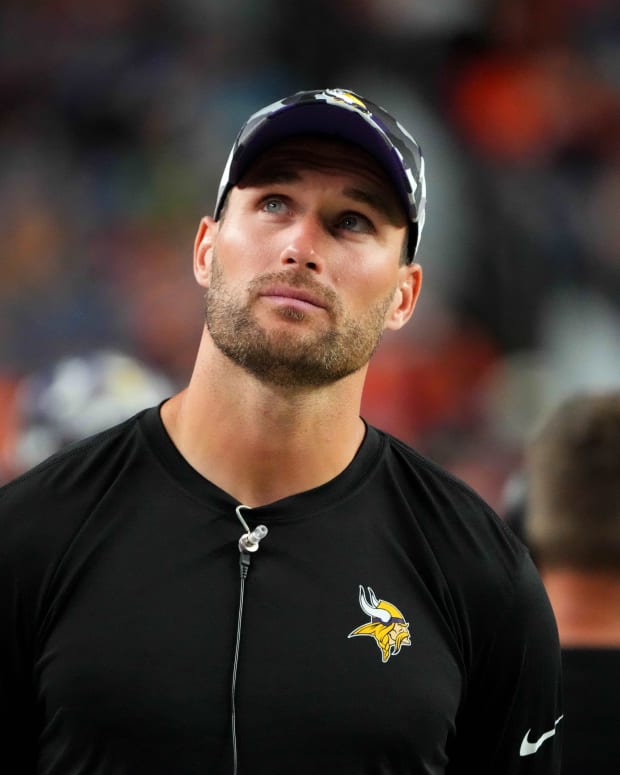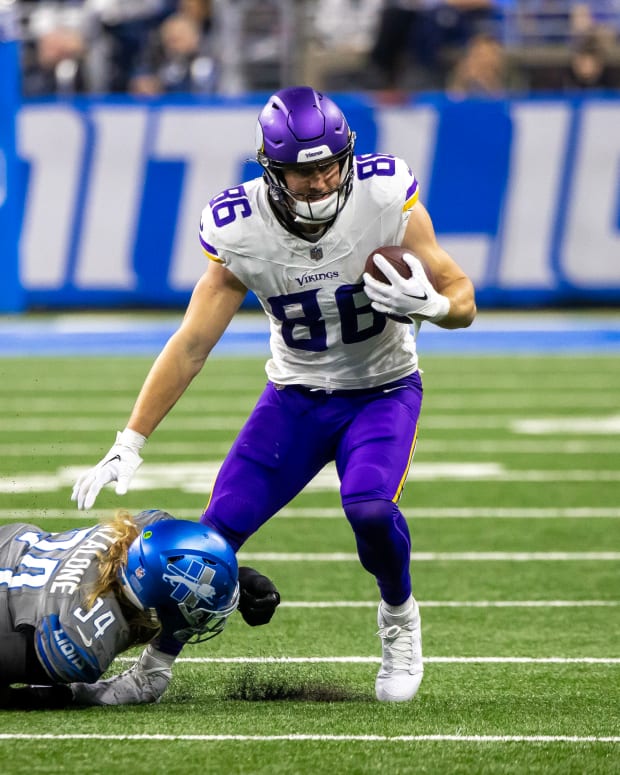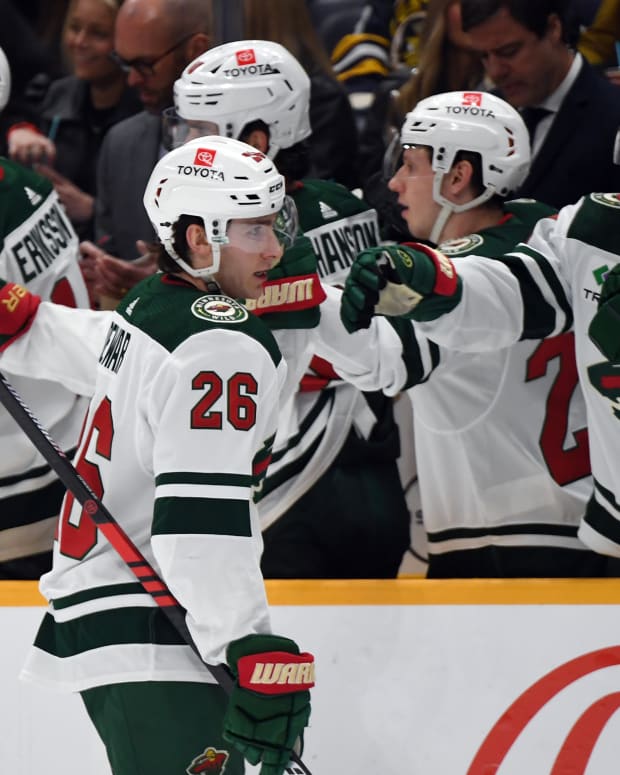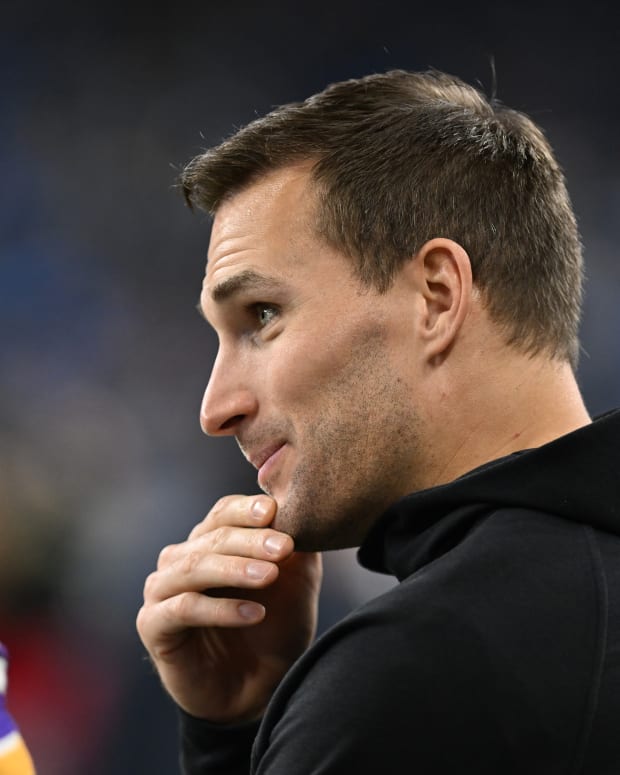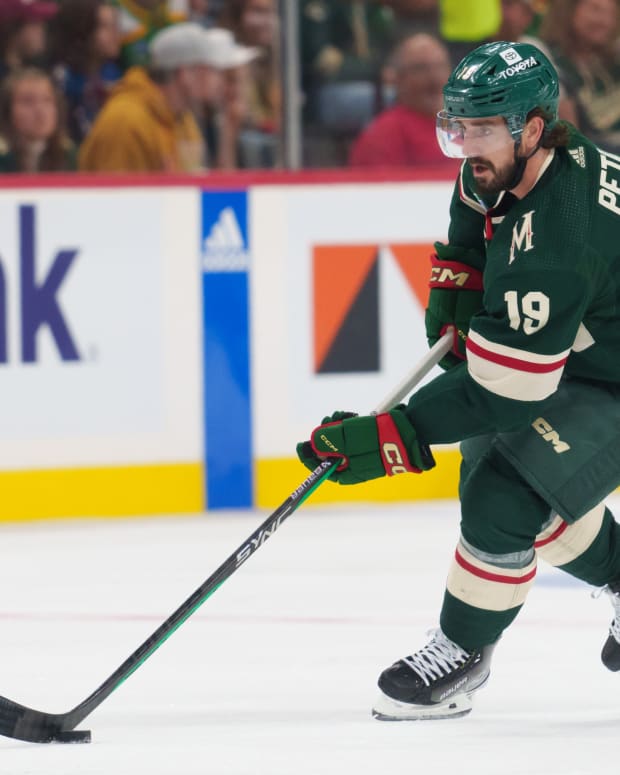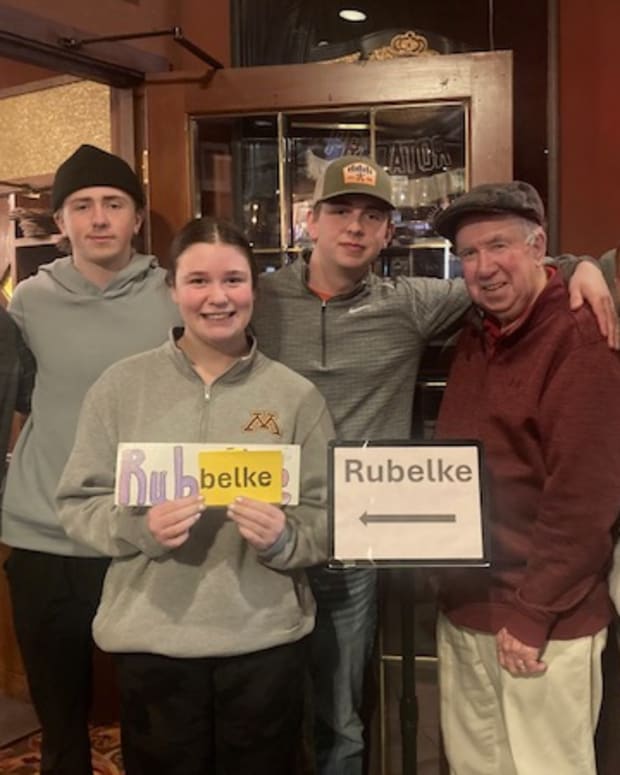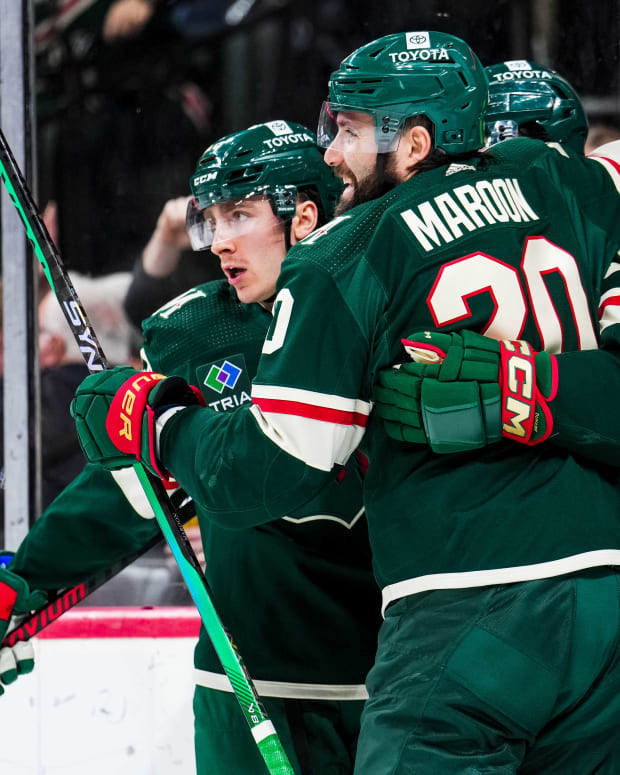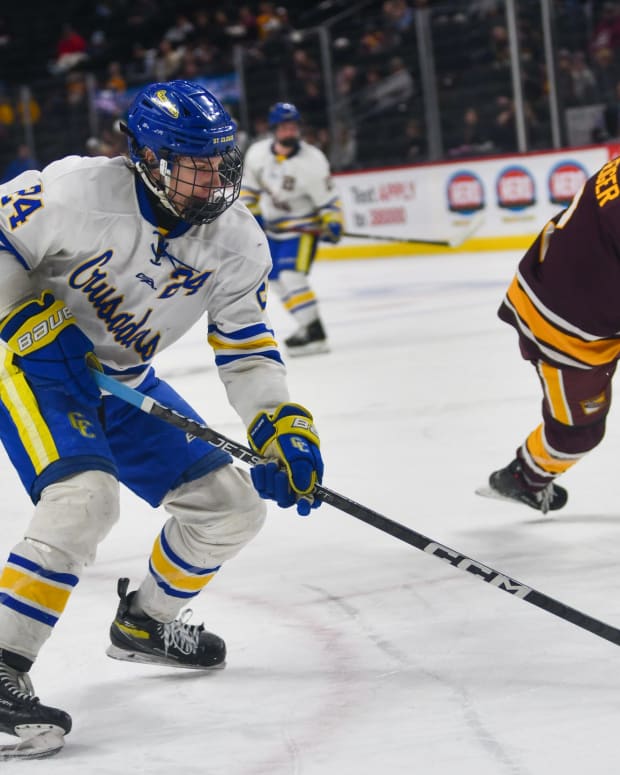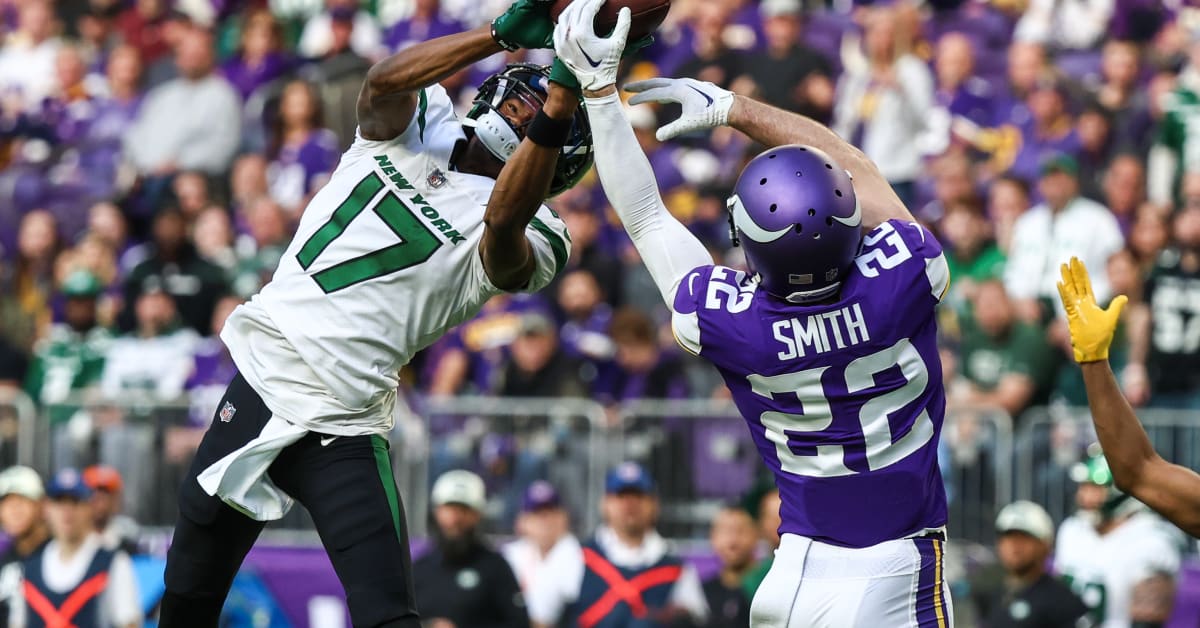
SKOL Searching: The two paths for Brian Flores and the Vikings defense
As the Minnesota Vikings turn their defense over to new defensive coordinator Brian Flores, the biggest question that he and the rest of the organization need to decide, in rather short order, is the path they want to take into next season.
It’s the broader question for the entire organization, but the defense sits at the center. The unit is veteran-laden and while last year didn’t show it, nearly all of those aging defensive starters have shown incredibly high peaks in their career. Za’Darius Smith, Danielle Hunter, Eric Kendricks, Patrick Peterson and Harrison Smith have all made Pro Bowls, many have been All-Pros.
But they undoubtedly didn’t work together in 2022. Will Kevin O’Connell and Kwesi-Adofo Mensah task Flores with making it work with largely the same personnel plus several newcomers? Or will they allow the defense to pivot and get younger, potentially at the expense of immediate results? Which route would Flores prefer?
None of that is known yet. So let’s explore what both paths could look like.
The “fill the gaps and go” approach
If contending again in 2023 is Minnesota’s goal, the defense remains much more of a project than the offense. The addition of another receiving threat – either in free agency or the draft – and a few more dice rolls on the interior offensive line could quickly make the offense another top-10 unit.
That’s the good news for the Vikings, who in this scenario won’t have much cap space to work with it. That reality becomes a much harder one to parse through for Flores and the defense – and it’s undoubtedly the more difficult path to believe in.
For Flores’ defense to be successful next season it must remedy the major shortcomings of the 2022 unit without the ability to completely overhaul the personnel. It will require several hits in the bargain bin of free agency and the internal development of both veterans and youngsters. And even with an all-in approach, Minnesota will likely need to say goodbye to at least one expensive defensive veteran. Here’s a conceivable plan the Vikings could pull off.
Who to hold on to?
Re-sign Cornerbacks Patrick Peterson and Duke Shelley, restructure Harrison Smith
Peterson isn’t the optimal fit for Flores’ defense at this stage of his career. With the Vikings likely to increase their blitzing and aggressiveness, more one-on-one man coverage will be required by the team’s cornerbacks. That would’ve been perfect for the Peterson of six years ago, but the 33-year-old veteran had his best season in years playing the lowest percentage of man coverage of his career. There were times last season when Peterson’s lack of high-end speed was quite noticeable, although he wasn’t picked on too much. He was only targeted 12 times in man coverage, per Pro Football Focus. He allowed three catches for 36 yards and a quarterback rating of 67.4.
Still, PFF expects Peterson to sign just a one-year $5 million contract. With the Vikings’ cap restraints, retaining him makes sense. He provided stability to a unit that lacked it and leadership to the rest of the roster that’s been valuable. Although resigning the veteran can only be one step in Minnesota’s plan.
Re-signing Shelley also seems like a value play. The sample size was quite small but Shelley was outstanding, particularly in man coverage. Shelley had the second-highest man coverage grade per PFF despite being picked on regularly in that coverage. Still, he allowed just a 51.0 quarterback rating. Shelley will cost even less than Peterson.
Then it comes to Smith, who had the first, true down year of his career in Ed Donatell’s system. Known for being an aggressive playmaker, those duties were all but taken from him in the Vikings’ scheme last season. His rate of playing as a deep safety jumped and he was asked to blitz only a dozen times all year. That figures to change in Flores’ scheme and could see a rejuvenation of Smith’s career. It may be tempting to forecast Lewis Cine to step into his role and to try and shed Smith’s cap number, but that salary can’t be easily dumped. The Vikings would carry $11.7 million in dead money. The best-case scenario given Minnesota’s cap situation is Smith and Cine playing as the starting safeties, with each having the capability of coming up to the line of scrimmage to blitz. Smith’s $19.1 million cap hit could be restructured down to about $10 million.
Cam Bynum could then be used as a depth and rotational cornerback in dime looks (six defensive backs on the field), which Miami used more than nearly every other NFL team during Flores’ tenure.
Restructure Za’Darius Smith, re-sign Danielle Hunter and Dalvin Tomlinson
If the Vikings truly want to push for the playoffs again, it’s hard to imagine they could find a better defensive line than the one they already had. Trading Hunter, cutting Za’Darius Smith or letting Tomlinson walk are all conceivable, smart cap moves. But with the cap commitments Minnesota already has on the books, it likely can’t find any better replacements on the open market.
A restructuring of Harrison Smith and Za’Darius Smith’s contracts could free up about $15 million total, which would likely be enough to fit both Hunter and Tomlinson extensions under the cap.
It’s the same strategy the Vikings have employed in years past and they have the mechanisms to do it once more. It would just raise the question, how much longer will they continue to do this?
Who to let go?
Linebackers Eric Kendricks and Jordan Hicks
Even with all the restructures to the defensive line and secondary, the bill still has to come due and the linebacker position could be the position to bear the brunt of that payment.
The Vikings would save $14.5 million by cutting both Kendricks and Hicks before June 1. In the scenario where Minnesota pushes for contention next season, those two moves plus another contract extension for Cousins that lowers his cap hit would be enough on its own to get the Vikings under the salary cap.
Then consider Flores’ past. The Dolphins quickly traded away linebacker Kiko Alonso after Flores arrived in 2019, instead relying on a slew of young and unproven players – Vince Biegel, Samuel Eguavoen, Jerome Baker and Raekwon McMillan. Flores signed Kyle Van Noy the next offseason, but he was released after just one year as Flores again largely relied on cheap and young players to fill similar roles to Kendricks and Hicks throughout his tenure.
Flores is also known best for his work with linebackers when he was an assistant coach. He was the linebackers coach last year with Pittsburgh and helped elevate both Devin Bush Jr. and Myles Jack after early career struggles. Even when going all-in, some cuts will be required. Flores has shown a history of developing successful linebackers, making it one of the easier positions to ignore. The late-season emergence of Brian Asamoah as a rotational linebacker could also be enough for Minnesota to feel good with the second-year rookie starting next season.
Needs in free agency
A linebacker to pair with Asamoah
Potential option: Los Angeles Chargers linebacker Drue Tranquill
Tranquill played well in his first full season as a starter. He registered 105 tackles and had a career-high 75.4 PFF coverage grade. He’d be asked to blitz frequently in Flores’ scheme and has shown flashes he could do well in that rule. He compiled 70 pash-rush snaps and generated 15 pressures, five sacks and three quarterback hits, per PFF.
PFF predicts a 2-year, $8.5 million contract.
Cheaper alternatives could be the Dolphins’ Duke Riley and Elandon Roberts, both of whom were signed originally by Flores. The Steelers’ Bush would also be a familiar name Flores could try to bring on board. Other veteran options include Denver’s Alex Singleton and Detroit’s Alex Anzalone.
At least one more cornerback
Potential option: Pittsburgh cornerback Cam Sutton
Flores certainly will be familiar with Sutton, who improved quite mightily in his third year as a starter. He registered a career-high in pass breakups, and interceptions and allowed a 50.7% completion percentage, by far his best as a starter. His 69.6 quarterback rating allowed was also a career-best as a starter. He also has experience in the slot, making him a versatile fit that could go both inside and out.
Pittsburgh’s defense scheme likely isn’t exactly the one the Vikings will trot out. The Steelers’ unit was much more in the mold of Mike Tomlin than Flores, but the familiarity should help, and the cap hit should be manageable enough to get on the books.
This is a spot Minnesota presumably thought it wouldn’t have to address in free agency this offseason, given they drafted both Andrew Booth Jr. and Akayleb Evans last year and Cam Dantzler had shown improvement. The health of both second-year players will probably decide how many resources they put into the cornerback room.
PFF predicts Sutton will receive a 3-year, $25.5 million (8.5M per year) deal.
Cheaper alternatives could be the Giants’ Fabian Moreau, Lions’ Amani Oruwariye or the Rams’ David Long Jr.
Rotational pass rusher
Both pass rusher and cornerback could be addressed in the draft, but given both tend to take a bit of time to adjust, Minnesota could also try to dip into free agency for more juice upfront.
Given all the assets needed to retain the players on the current roster, this would likely be nothing more than a true bargain-bin player. Aging veterans like Jason Pierre-Paul, Justin Huston and Robert Quinn come to mind. A Flores and Kyle Van Noy reunion could make some sense, as would Trey Flowers, who was with Flores in New England.
The Vikings would need to skimp somewhere – and given the resources poured into the secondary, another rotational pass rusher would be on the back burner.
The “take a step back” approach
This is the much less convoluted approach and it takes much less hand-wringing to make the money work.
A lack of adequate drafting and development over the final years of the Mike Zimmer/Rick Spielman tenure and the first year of the new regime has left the defense gasping for youth. This path would hope to remedy that.
If the Vikings do decide to take a step back, hoping to retool like the Eagles did and push forward toward playoff contention two or three years down the line, the defense is easy to tear down and could give themselves some cap flexibility to work with over the next several seasons.
As mentioned, cutting Kendricks and Hicks would create nearly $15 million in cap space. Releasing Za’Darius Smith saves another $12 million. Independent of any other moves on the roster, that brings the team under the salary cap.
It doesn’t mean the Vikings would need to rid themselves of all their veterans. An extension of either Hunter or Tomlinson makes sense, considering their primes could still line up with a later playoff window. The Eagles held on to Brandon Graham from their previous Super Bowl and he proved to be a valuable part of Philadelphia’s defense this season.
Keeping Harrison Smith wouldn’t necessarily align with Minnesota’s next playoff window, however, his contract isn’t easy to move off of either. The new regime seemingly drafted Smith’s replacement in Cine, so that could foreshadow a move, but cutting him would create only $7 million in space and leave a nearly $12 million dead cap hit.
The probable outcome in this retooling path is that one or two of the veterans stay on the team while the rest are released or traded.
The result would be trial by fire for many of the Vikings’ young players that have been stuck behind veterans. Brian Asamoah is a probable starter at linebacker. One of Patrick Jones or D.J. Wonnum could nab a starting defensive line spot. Several young players will likely have major responsibilities in the secondary, whether it’s Dantzler, Booth, Evans or Cine.
In this scenario, the idea of starting rookies is not out of the question either. It’s a different situation but the Chiefs gave five rookie defenders a considerable amount of snaps by the postseason. That’s a dream scenario and one the Vikings shouldn’t bank on, but they may very well put several rookies in a position to either sink or swim.
There’s plenty of time before the draft, but several of the defensive names that have already been consistently mocked to the Vikings include:
Illinois cornerback Devon Witherspoon – the prototypical “island cornerback,” known for his man coverage skills and feisty play. Witherspoon would allow the Vikings to blitz and feel confident with the coverage on the back end.
Penn State cornerback Deonte Banks – another press cornerback that’s physical on the line of scrimmage and at the catch point. He’s got a massive wingspan and locates the ball well in the air.
LSU EDGE BJ Ojulari – quick and bendy pass-rusher that gets to the quarterback frequently. More than 100 pressures and 100 tackles in the last two seasons. Could serve as a rotational rusher at the beginning of his career and evolve into an every-down player.
The defensive reboot could also receive a jolt if Minnesota moves on from Cousins, whether it be this year or next year. That would free up considerable cap space the Vikings could use to lure a star defensive player, not just mid-tier and bargain-bin players.
It appears rather unlikely that happens this offseason, but a year of development for several of the second and third-year players and a promising start for one or two rookies could quickly make this Vikings team just a couple of free agency pieces away from having an average or above average unit.
Wednesday’s introductory press conference with O’Connell and Flores could give the first sense of which path the organization plans to take.
